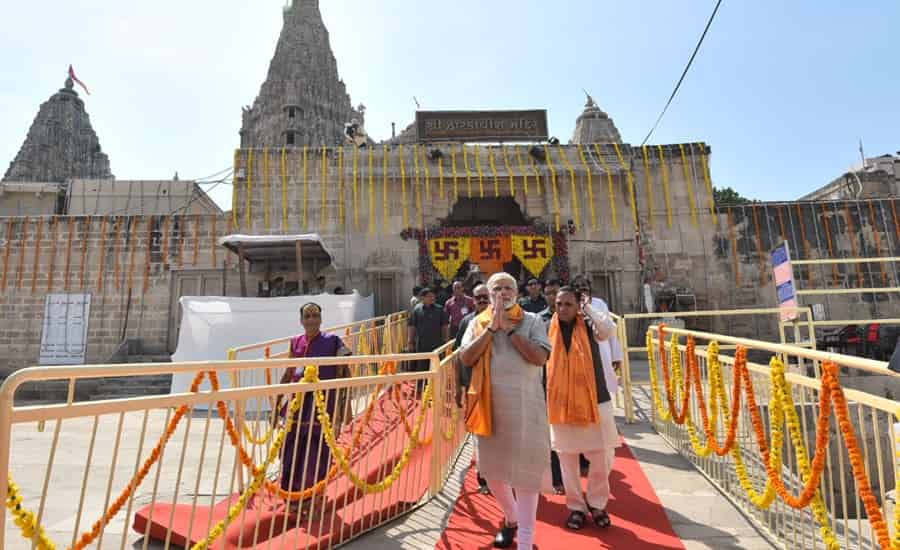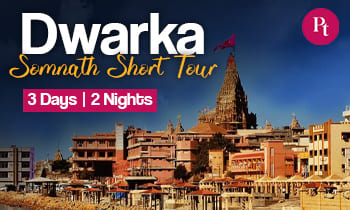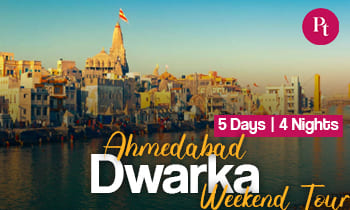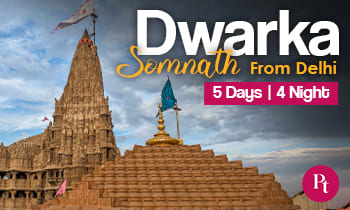Dwarka, located in the western part of India in the state of Gujarat, is a city with deep historical and religious significance. As a popular pilgrimage site for Hindus, Dwarka attracts devotees from all over the country. The best time to visit Dwarka depends on various factors such as weather, temperature, and the season. In this comprehensive guide, we will explore the climatic conditions in Dwarka throughout the year to help you plan your visit effectively.

Summer in Dwarka: (March to June)
- Temperature: Summers in Dwarka can be quite hot, with temperatures ranging from 25°C to 42°C (77°F to 107.6°F). The peak of summer is usually in May, and visitors should be prepared for scorching temperatures.
- Weather: Clear skies and dry weather are characteristic of the summer season. The days are long and sunny, making it ideal for exploring outdoor attractions.
- Activities: While the temperatures might be high, summer is an excellent time to visit Dwarka for those who can handle the heat. The city is less crowded, and you can enjoy the serenity of the ancient temples without the hustle and bustle of peak tourist season.
Monsoon in Dwarka: (July to September)
- Temperature: Monsoon brings relief from the summer heat, with temperatures ranging from 25°C to 35°C (77°F to 95°F). The humidity levels increase during this season.
- Weather: Monsoon in Dwarka is characterized by heavy rainfall, providing a respite from the scorching heat. The landscape turns lush green, creating a picturesque setting.
- Activities: While the rain might limit outdoor activities, monsoon is a magical time to witness the beauty of Dwarka. The temples and landscapes come alive, and the city takes on a refreshing ambiance. However, it’s essential to be prepared for occasional disruptions due to heavy rains.
Autumn in Dwarka: (October to November)
- Temperature: Autumn sees a gradual decrease in temperatures, ranging from 20°C to 35°C (68°F to 95°F). The weather is pleasant, making it an ideal time to visit.
- Weather: The skies start clearing up, and the humidity levels drop during the autumn months. This transitional period offers a comfortable climate for exploring the city.
- Activities: Autumn is considered one of the best times to visit Dwarka. The weather is pleasant, and the city is less crowded compared to the winter months. It’s an excellent time for sightseeing, temple visits, and enjoying outdoor activities.
Winter in Dwarka: (December to February)
- Temperature: Winter is the most popular time to visit Dwarka, with temperatures ranging from 10°C to 25°C (50°F to 77°F). The weather is cool and comfortable, making it suitable for all types of travelers.
- Weather: Winters in Dwarka are characterized by mild temperatures, clear skies, and a gentle breeze. The weather is ideal for exploring the city’s historical and spiritual attractions.
- Activities: Winter is the peak tourist season in Dwarka. The comfortable weather allows visitors to explore the city without the discomfort of extreme temperatures. It’s the perfect time for temple visits, cultural events, and enjoying the coastal beauty of Dwarka.
Month-wise Breakdown
March to June (Summer)
- March: The temperatures start rising, and it gets progressively hotter towards June.
- April: The peak summer heat sets in, and daytime temperatures can be challenging.
- May: The hottest month, with temperatures reaching their maximum. Not recommended for travel.
- June: The heat continues, and it’s advisable to avoid outdoor activities during the day.
July to September (Monsoon)
- July: Monsoon arrives, bringing relief from the summer heat. However, heavy rainfall can occur.
- August: Rainfall continues, and while the temperature is lower, outdoor activities may be restricted.
- September: The monsoon starts to recede, but there may still be occasional showers.
October to November (Autumn)
- October: Post-monsoon, the weather starts becoming more pleasant. It’s a good time to visit with comfortable temperatures.
- November: The transition to winter begins, and the weather remains mild. Ideal for outdoor activities.
December to February (Winter)
- December: Winter sets in, and the weather is cool and comfortable. Festivals like Diwali add to the cultural experience.
- January: The coldest month, but temperatures are still moderate. Warm clothing is recommended.
- February: Winter continues, and the weather remains pleasant. It’s a good time for sightseeing and religious activities.
Special Events and Festivals:
- Krishna Janmashtami: Celebrated in August, this festival marks the birth of Lord Krishna. Dwarka comes alive with vibrant celebrations, processions, and special events during this time.
- Diwali: The festival of lights, usually celebrated in October or November, is a joyous occasion in Dwarka. The temples are adorned with lights, and the city is filled with a festive atmosphere.
- Dwarka Beach Festival: Held during the winter months, this festival showcases the rich cultural heritage of Dwarka. It includes music, dance performances, and various water sports activities.
Conclusion
In conclusion, the best time to visit Dwarka is during the winter months, from October to February, when the weather is pleasant, and various festivals add to the cultural experience. While summer is scorching and monsoon brings relief but also rainfall, autumn and winter provide the most comfortable conditions for a fulfilling trip. Plan your visit according to your preferences, keeping in mind the climatic variations and the cultural festivities that align with your interests.
Also Read:




 Call
Call WhatsApp
WhatsApp Enquiry
Enquiry